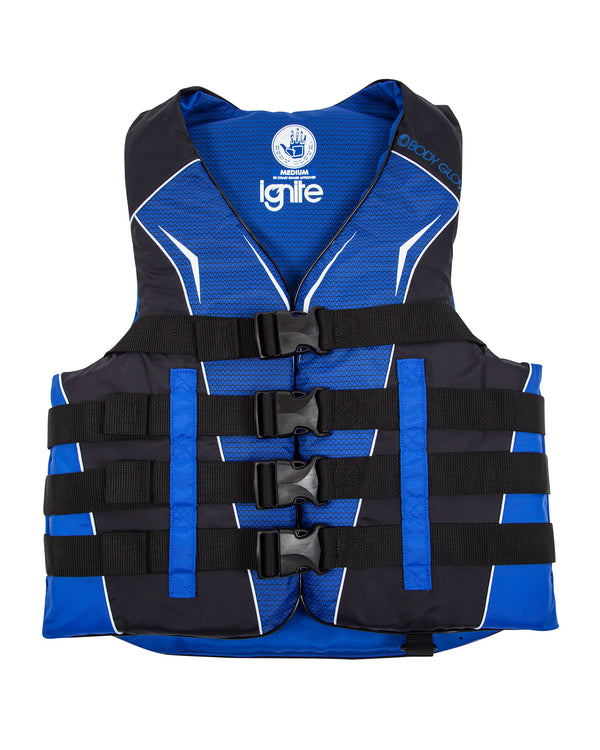

Designed so that wearing it will complement your boating activities: Type IV PFDs / Flotation Aidsĭesigned as a thrown flotation device to provide additional buoyancy to a person in the water. Good for calm, inland waters, or where there is a good chance for fast rescue. Type III PFDs / Flotation Aidsįor general boating or the specialized activity that is marked on the device such as water skiing, hunting, fishing, canoeing, kayaking and others.

Type II PFDs / Near-Shore Buoyant Vestsįor general boating activities. Abandon-ship lifejacket for commercial vessels and all vessels carrying passengers for hire.

Type I PFDs / Off-Shore Life Jacketsīest for all waters, open ocean, rough seas, or remote water, where rescue may be slow coming. Inherent buoyancy PFDs are generally made from closed cell foam and are effective as long as you are wearing the PFD and often when you are unconscious. Inflatable PFDs are not designed for river use and are generally designed as emergency PFDs like the type you find on Airplanes. There are 5 categories of PFD and generally 2 subcategories: inflatable and inherent buoyancy. The types designate broad categories of how the PFD is designed to be used. There are 5 categories of PFD and it is important to note that the higher the number does not mean a better PFD. Your interest in occupational safety and health is appreciated.The US Coastguard sets the standards in the United States for performance and design characteristics for PFDs. Should you have any questions regarding this matter or require further assistance, please call. Applicable OSHA standards pertaining to PFD's include. A Type V Hybrid Inflatable PFD marked for "Commercial Use", "Use as a Work Vest", or "Approved for use on All Vessels" would be recognized as being in compliance with Federal OSHA standards. A Type V Hybrid Inflatable PFD marked as "Recreational Hybrid Inflatable" would not be in compliance with Federal OSHA standards since the PFD is approved only for recreational use, and not for commercial use or use as a work vest. Coast Guard devices approved as a Type I PFD, Type II PFD, Type III PFD or Type V PFD, or their equivalent if the restrictions marked on the PFD do not preclude its use. When making compliance determinations involving employees in situations which require personal flotation devices, OSHA currently accepts U.S. Coast Guard approved PFD of the proper type will meet OSHA standards.
#Type 3 pfd verification#
You requested that we provide you with written verification indicating that any U.S. For example a Type V Hybrid Inflatable could be marked with text which includes one of the two following statements: (1) "Recreational Hybrid Inflatable - Approved for use only on recreational boats" or (2) "Commercial Hybrid PFD - Approved for use on inspected commercial vessels as a WORK VEST only." It is noted that this is an example only and that other restrictions may apply with respect to both recreational and commercial hybrid PFD's. Each PFD is specifically marked with text which includes, the type of approval for use and any restrictions that apply. A commercial hybrid PFD is approved for use on commercial vessels. A recreational hybrid PFD is approved for use on recreational boats. Coast Guard can grant type approval as either a recreational hybrid or a commercial hybrid. For Type V Hybrid Inflatable PFD's the U.S. Coast Guard have specific restrictions with respect to their approved use. All hybrid PFD's which are approved by the U.S. Although you did not specifically indicate, it is our understanding that the D-40 Life Belt would be classified as a Type V "Hybrid Inflatable" PFD. Coast Guard is in the process of reviewing and classifying the D-40 Life Belt as a Type V equal to Type III personal floatation device (PFD). You indicated in your letter that the U.S. This correspondence is in response to your letter to Mr.


 0 kommentar(er)
0 kommentar(er)
